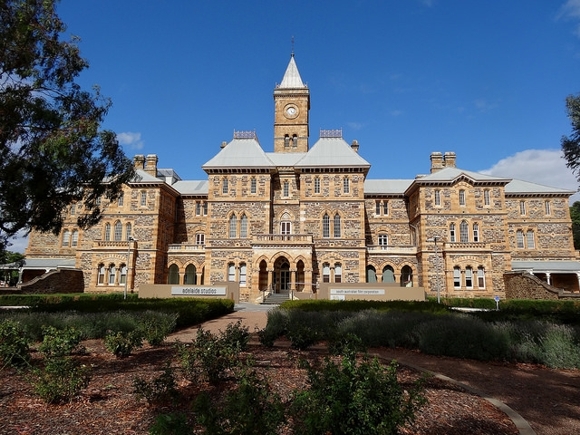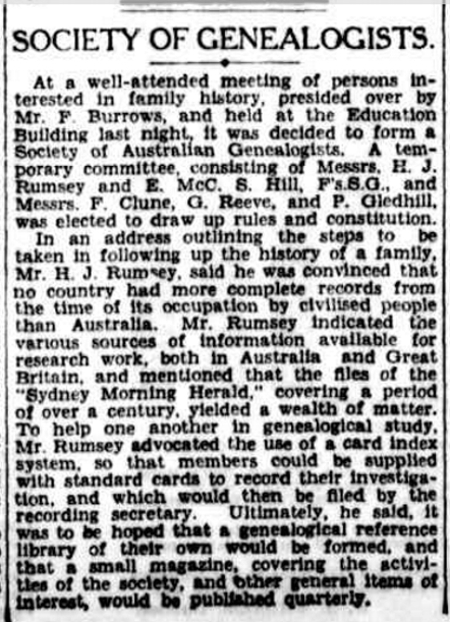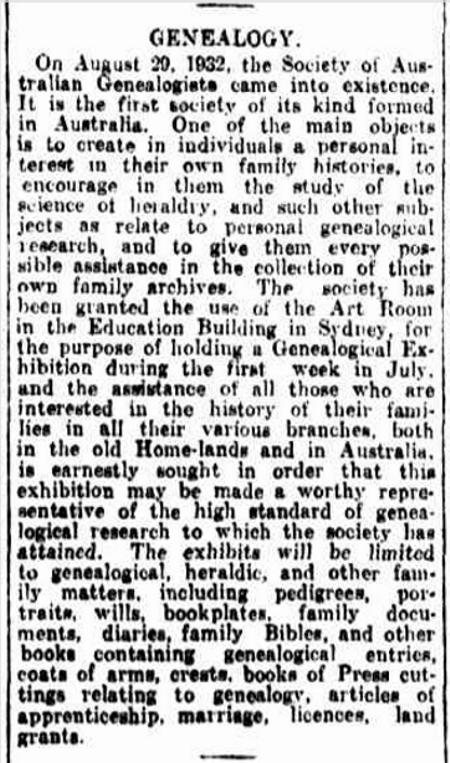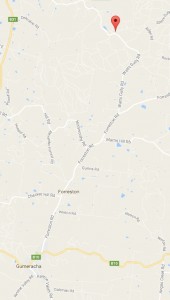They Died in the Asylum
Parkside Lunatic Asylum is the original name for the building that was subsequently renamed to Parkside Mental Hospital, then Glenside Hospital and more recently Glenside Health Services.
Situated on Fullarton Road at Glenside, it is in one of Adelaide’s leafy eastern suburbs and is by outwards appearance, a magnificent place. But the asylum was far from that for the inmates at the asylum, and sadly for so many it was their last home.
The Parkside Lunatic Asylum was opened in 1870 initially housing men, but by the 1880s men, women and children were being housed there. It housed not only those suffering from mental illness, but also people with intellectual disabilities and medical conditions like epilepsy.
While browsing around on Trove, I found this article in the Adelaide Advertiser, 14 January 1910, and was saddened by the fact that there was so many who even in a six month period, died without family nearby.
– Wilhelm Heinrich Dittich (71), July 5, pulmonary disease and cardiac failure
– Judy (aboriginal female), (60), July 10, gastritis and cardiac failure
– Guiseppe Castagneth (58), August 8, apoplexy and cerebral disease
– Rosalie Russell (63), August 20, hepatic disease and ascites
– Theodosia Byrne (78), August 20, apoplexy and senile decay
– Sarah Jane Hayes (35), August 29, phthisis and exhaustion
– Bridget (alias Annie) Evans, (42), August 29, suicide by hanging
– William Conway (36) September 1, general paralysis and apoplexy
– Dora Knout (80), September 2 cardiac disease and senile decay
– William Carruthers (75), September 5, diarrhoea and senile decay
– Thomas Paddock (70) September 17, cardiac disease and senile decay
– Alfred Perfect (48) September 18, apoplexy and paralysis
– George Henry Holmes (52), September 26, pulmonary tuberculosis and exhaustion
– Isaac Mowatt (69), November 2, empyæmia
– Mary McNulty (60), November 13, Pulmonary tuberculosis and exhaustion
– Oscar Genske (55), December 6, cardiac disease and paralysis
– John Kew Dawson (69), December 10, senile decay and exhaustion.

Glenside Hospital, formerly the Parkside Lunatic Asylum, taken 2015
Source: denisbin Flickr
– Parkside Lunatic Asylum on Find & Connect
– Untold Stories of the Parkside Lunatic Asylum on Weekend Notes
Society of Australian Genealogists …. the Beginnings
Most Aussies who’ve been doing genealogy for a little while will be familiar with the major genealogical societies in each state: QFHS, GSQ, AIGS, GSV, WAGS, GSNT, GST, SAGHS, HAGSOC and SAG. Today’s story focusses on the Society of Australian Genealogists in Sydney, which we commonly refer to as SAG.
While recently browsing on Trove (as you do on cold, almost-winter evenings), I came across the following article which tells of the beginnings of the Society …

the Sydney Morning Herald, 30 August 1932, p. 8
http://nla.gov.au/nla.news-article16915901
So as you can see the Society of Australian Genealogists was formed way back in 1932. This made me go looking to see when the other state societies were formed, and here’s what I found:
1941 – Genealogical Society of Victoria
1964 – Heraldry & Genealogical Society of Canberra (also now known as Family History ACT)
1973 – South Australian Genealogy & Heraldry Society (also now known as GenealogySA)
1973 – Australian Institute of Genealogical Studies
1978 – Genealogical Society of Queensland
1979 – Queensland Family History Society
1979 – Western Australian Genealogical Society
1980 – Genealogical Society of Tasmania (now known as Tasmanian FHS)
1981 – Genealogical Society of the Northern Territory
A snippet from the above 1932 article states…
“Mr. H. J. Rumsey, said he was convinced that no country had more complete records from the time of its occupation by civilised people than Australia. Mr. Rumsey indicated the various sources of information available for research work, both in Australia and Great Britain … To help one another in genealogical study, Mr. Rumsey advocated the use of a card index system, so that members could be supplied with standard cards to record their investigation. Ultimately, he said, it was to be hoped that a genealogical reference library of their own would be formed, and that a small magazine, covering the activities of the society, and other general items of interest, would be published quarterly.”
Now fast forward two years to June 1934, and we read about the coming “Genealogical Exhibition” which they are holding …

Newcastle Morning Herald and Miners’ Advocate, 14 June 1934, p. 6 http://nla.gov.au/nla.news-article135107397
To quote a portion from the above article it starts off with a little history of the society …
“It is the first society of its kind formed in Australia. One of the main objects is to create in individuals a personal interest in their own family histories, to encourage in them the study of the science of heraldry, and such other subjects as relate to personal genealogical research, and to give them every possible assistance in the collection of their own family archives.”
“… holding a Genealogical Exhibition during the first week in July, and the assistance of all those who are interested in the history of their families … The exhibits will be limited to genealogical, heraldic, and other family matters, including pedigrees, portraits, wills, bookplates, family documents, diaries, family Bibles, and other books containing genealogical entries, coats of arms, crests, books of press cuttings relating to genealogy, articles of apprenticeship, marriage, licences, land grants.”
That would have been fun to attend, don’t you think?
Now fast forward another 83 years to 2017, and the Society of Australian Genealogists is still going strong, with over 4000 members from all round the world, and is totally moving with the times.
SAG have proved themselves to be one of the most innovative groups in Australia. Not only do they have a very spiffy website (www.sag.org.au) , social media accounts (Facebook, Twitter and YouTube), apart from having local meetings online, they also host webinars, have members only section on their site, run a bookshop, and have a number of Special Interest Groups (SIGs) for those who want to focus on something more specific such as writing, DNA, English research or a particular software program, all very valuable ways to keep a society active and members interested.
SAG is also the host society for the next year’s Australasian Congress. So from organising the big exhibition in 1934, to organising Congress in 2018, they’re still going!
I just wanted to say to the Society and their volunteers … you should all be incredibly proud of yourself for the many thousands of people you’ve helped near and far, over the years. And here’s to many more years of helping genealogists find their families! Awesome work guys.
Trove Tuesday: “There’s Gold in Them Hills …”
The tiny town of Gumeracha in the Adelaide Hills is well known these days for being the home of the world’s biggest rocking horse, the annual medieval fair, and of course wines. But believe it not, at one stage, Gumeracha was well known for its goldfields.
Many who have connections to the area would have heard of Watts Gully Road at Forreston (previously North Gumeracha), this was one area where gold was, and was first found by James Watts back in 1884. Dead Horse Gully is near Watts Gully Road, and this was another of Gumeracha’s gold diggings areas.
For my Trove Tuesday post, I’ve found the following article which discusses the Dead Horse Gully goldfields … and for someone who didn’t know about them (yes me), I found it fasinating, so thought I’d share it with you. Note: old references to this place list is as Deadhorse Gully (two words), or even Dead-Horse Gully (with a hyphen), current day spelling is Dead Horse Gully (three words). For consistency, I’m using the three word version.
From the South Australian Register, dated Saturday 14 March 1885 …
THE GOLD FIND AT GUMERACHA.
During the last few days large number of men have arrived at Dead-Horse Gully on the gold rush. Now nearly 100 men are working in the gully around Mount Crawford. The rush was so great that on Thurs-day Hill & Co. put on a special coach from Adelaide. The rush is at Mount Crawford, about seven miles north-east of Gumeracha. To get at the field it is necessary to turn off the main road at North Gumeracha-road and to go right through that township. For the first three miles there is a good district road, but after that there is merely a vehicle track through the scrub and rough hilly ground. Deadhorse Gully is about a mile and a half long, and is thickly wooded with colonial honeysuckle. On entering the gully several holes where trials have been made are noticeable. These are in some cases three or four feet deep; in other cases even more. Right along the gully a large number of claims, about fifty, are being worked. These are of various depths. One or two men have gone to a depth of 18 feet before bottoming. The soil is gravelly and patched with black sand in nearly all the claims. In this soil gold is found in a great many cases.The gully runs due east and west, and the whole length has been pegged out. In some cases the men say that they have got payable gold, while others have got simply the colour. One man, who has been working in the gully for three years with his mate, kept the matter quiet, but every fortnight he used to take £8 or £9 worth of gold into Gumeracha. He has been very successful, and has a nugget in his possession weighing 3 oz. Other men have done very well. One showed several nice nuggets weighing under an ounce. He had got all the gold from coarse rough surface. The average depth of the claims before striking the drift is about ten feet. Of course, gold is got at a less depth than that in some places. One man only went four feet before he came on stuff which, when panned, yielded several specks. Some men who have been up several days have been unsuccessful and have cleared out, but their places were quickly filled. Several men are on the road tramping it to the gully. It is considered that there is gold in the drift from the reef on the hill on the north side of the gully. Experienced miners on the ground agree that all the gullies in the vicinity contain gold, and that several abound with gold to quite as great an extent as this. Two or three men have marked out claims in other gullies.
Cabs, carts, drays, wagons, and vehicles of all descriptions are on the ground. There are a number of tents for the men to sleep in, but others are content to lie under trees or to sleep in carts. There are men of all occupations amongst those present — old miners, clerks, cabmen, labourers, several boys, and sailors.
At the East-End Gully there is an indication of a good reef. Some quartz picked, up on the surface showed copper, gold, and pyrites. The great difficulty to contend with in working claims is water. When the men get down ten feet or so water from the hills soaks through this, and has caused the abandonment of one or two claims. Provisions for the camp are brought round by the storekeepers of Gumeracha, but a store in a galvanized-iron structure of about twelve feet by nine is to be opened on Saturday.
On Thursday the Warden of the Goldfields visited the ground, and considers that there is good gold in the gully, but not enough of the mineral for the hundred men who are now on the spot. The whole bottom of the valley has been pegged out. Mr. Hack says that the gullies on either side of this one have gold, and advises the men to spread out. If they do this there is very little doubt but that the industry will get a good start, as the surface is good – so good that he believes that the reefs, of which there are several in the hills around and about, must be very rich.
The samples of ore found are of what is known as burnt ore. It would be very foolish for any more men to go on at present to the gully, as all the likely ground is holed, but the other gullies, to which provisions could be taken daily, offer a good field for prospecting.
Owing to the crude character of the utensils some gold has probably been lost. If the reef is fallen in with at these claims the men will be unable to crush the stone, but none appear anxious to do other than sink surface claims. During the day a large number of visitors go over the ground. The best find so far was a nugget weighing 3 oz.
Fascinating isn’t it, though I still find it hard to envisage just what it was like back then. You can find the whole original article on Trove here.
So there’s just one more little piece of a small town’s amazing history for you.
For those who are not familiar with the term Trove Tuesday, it is a popular theme within the Australian genealogy blogging community, as we browse the Trove website (Australia’s old newspapers that are online AND FREE), find an article that interests us, and write about it … usually on a Tuesday. You can find all of my past Trove Tuesday posts here.
Sudden Death at the Railway Station
Some days just don’t go as planned, and 22 June 1869 was certainly one of those day for the Elphick family of Adelaide.
There’s certain words when researching that grab a researchers attention. One being the phrase ‘sudden death’ with another being ‘inquest’. Both of these we terms I came across in the newspapers on Trove, when looking for info on Mr Lonetester’s 3x great grandpa, William Kennard Elphick.
I imagine that Tuesday the 22nd of June 1869 started out as a fairly standard day for the Elphick family of Adelaide. William Kennard Elphick was out and about, and made his way to the Adelaide Railway Station on North Terrace by late afternoon, either to head out or head home. However that’s when tragedy struck.
While walking down the stairs William collapsed, and died …
INQUEST ON MR W.K. ELPHICK
On Wednesday, Mr. T. Ward, J.P., held an inquest at the Adelaide Hospital, for the purpose of ascertaining the cause of the death of William Kennard Elphick. A Jury of 13 having been empanelled, and Mr. J. M. Dowie chosen foreman, the following evidence was taken, after the body had been viewed:— James March Stacy, bootmaker, said yesterday afternoon about 4.20 he was at the Railway Station. Saw a crowd assembled carrying the deceased, whose body he had just seen in the dead-house. Recognised it as that of W. K. Elphick, late of the Burra Mine. Some females bathed his head with cold water. Felt his pulse, and found only one pulsation. Then placed his hand on the heart, which had ceased to beat. Dr. Phillips then came in. Left the deceased in charge of the police, and afterwards communicated with his friends. By a Juror—The cold water was applied whilst he was feeling the pulse of the deceased.James Phillips, surgeon, said he had made a postmortem, examination of the deceased, and on examining the heart found certain portions of it in a greatly dilated state. One part in particular was excessively attenuated. There was fatty degeneration of the structure of the heart, and the arteries which supply the tissues of the heart with blood were ossified. Found also the surface of the brain in a congested state. There was a sudden cessation of the action of the heart from want of power to carry on the circulation. This was undoubtedly the cause of death.
Herbert D. Gouge deposed to being at the Railway Station on Tuesday, and seeing the deceased coming down the terrace towards the station. He came outside, and as witness was about to speak to him, deceased made a plunge forward. The messenger of the Hospital came up and helped witness to carry him into the waiting-room. He did not speak, but groaned heavily once or twice. Dr. Phillips arrived about 10 minutes afterwards. By a Juror—Deceased did not appear to have been walking fast. The Coroner then summed up, and a verdict to the effect that the deceased died from disease of the heart was returned. [The South Australian Advertiser, p. 3. 24 June 1869. http://nla.gov.au/nla.news-article31990554]
It is obvious that William Elphick was someone of note, as every South Australian newspaper that is currently on Trove, has details of his death, and inquest. Mind you having lived and worked not only in Adelaide, but also at Burra, and in Western Australia as well, it’s not really that surprising.
But finding this info was a surprise, and a sad end to one of Mr Lonetester’s emigrating ancestors. William together with his wife arrived on the “Plantar” ship in 1839, after a unbelievable 6 month journey. It took longer than the regular 4 months, as the captain was incompetent as got lost on the way, missing a port, and then had to detour elsewhere to get supplies. Not only that, but the crew mutinied, so a new crew had to be found … and so on. It’s truly stranger than fiction tale, but it happened. Details of the voyage can be found in a shipboard diary that a fellow emigrant wrote.
![Adelaide Railway Station, North Terrace, 1870 [From the State Library of South Australia, Number: B.....]](http://www.lonetester.com/wp-content/uploads/2017/04/Adelaide-Railway-Station-1870-SLSA-580.jpg)
Adelaide Railway Station, North Terrace, South Australia, 1870
[Courtesy of State Library of South Australia, B 69476]





